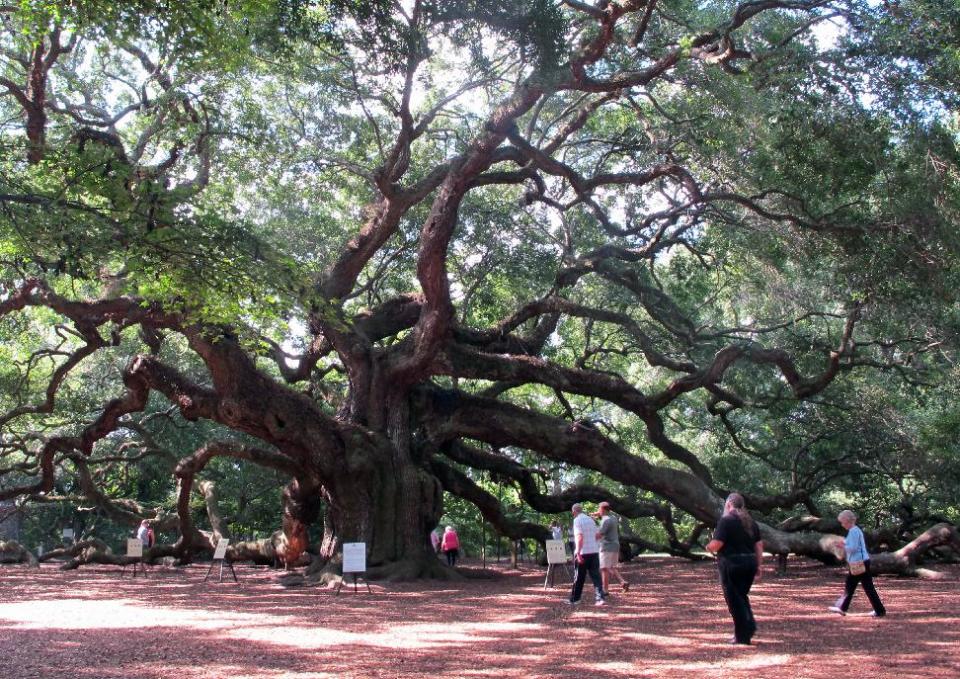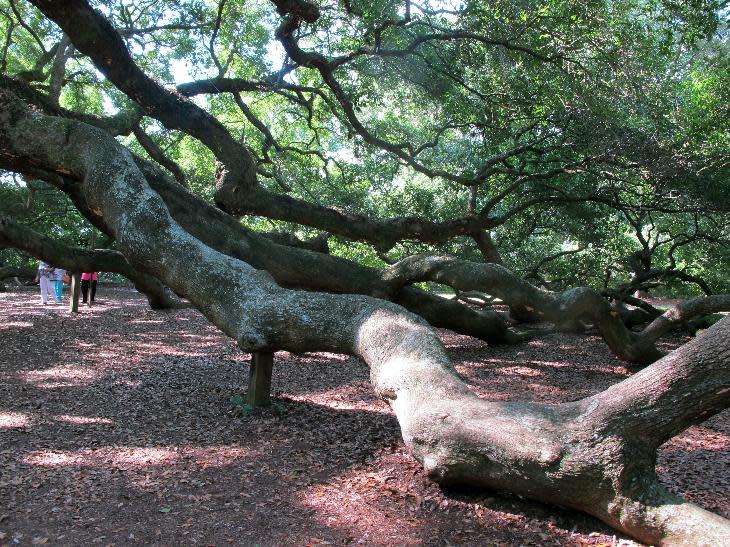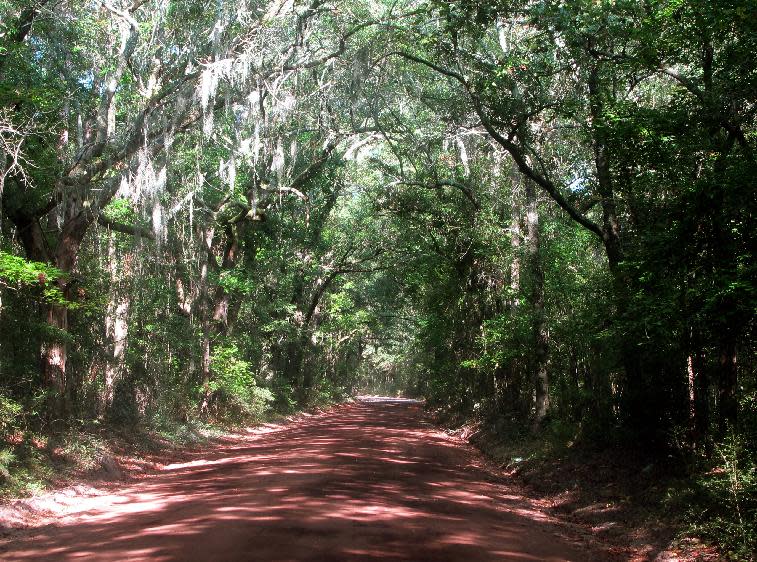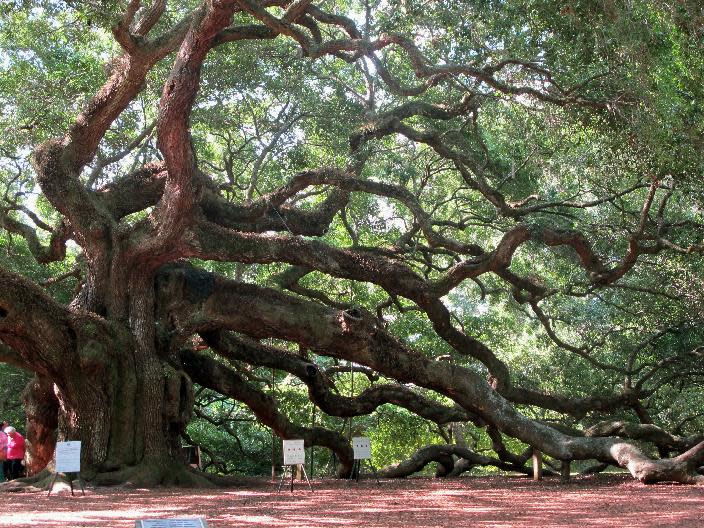Groups work to protect land around ancient SC oak
JOHNS ISLAND, S.C. (AP) — The Angel Oak is one of the most majestic trees in South Carolina, or anywhere for that matter, and thought to be as much as five centuries old.
Now thousands of people and the Lowcountry Open Land Trust are working to make sure the tree is around for centuries to come by raising money to purchase 17 acres of land and prevent development adjacent to the oak.
The towering live oak on Johns Island, the centerpiece of a small park operated by the City of Charleston, has a trunk 25 feet in circumference and its largest limb is almost 90 feet long. Some limbs are so long and heavy they are braced with wood to keep them from snapping.
Locals like to say the Angel Oak, named for a family that long owned the property, is as much as 1,500 years old and the oldest living thing east of the Mississippi River. Neither is true. Indeed the oak isn't even the oldest living thing in the Charleston area.
"That 1,500-year thing has been around for a long time. But based on everything we know and the growth rate of live oaks, our best educated guess is the tree is between 400 and 500 years old," said Jason Kronsberg, the deputy director of the Charleston City Parks Department. "Live oaks actually don't grow slowly as most people think. They just grow for a long time."
Researchers from the University of Arkansas have identified a more than 1,200-year-old bald cypress in Four Hole Swamp about 40 miles northwest of Charleston.
While not the oldest or the biggest, the oak with its mammoth branches has long been a favorite stopping place for locals and tourists alike.
"At the height of segregation, this was the most desegregated piece of property in the area," said Mike McShane of the nonprofit trust and a former chairman of the board of the South Carolina Department of Natural Resources.
"After church, whites and blacks would come here for the shade of the Angel Oak and picnic after church," he said in a recent interview in the park where the oak stands. "It was never segregated."
The city acquired the oak and a two-acre park back in the 1990s. Two years ago, it purchased more than 6 additional acres at the site. Now the Open Land Trust is working to acquire 17 more acres from a tract that was to be developed with multifamily homes and businesses. That project fell into foreclosure during the recession.
McShane, who lives on Johns Island and is the chairman of the trust task force is hopeful the trust will be able commit to purchasing the property in the coming weeks with donations from the public, the city, Charleston County and the state Conservation Bank.
He says about $100,000 still needs to be raised. The local Piggly Wiggly stores have helped raise money and there have been 8,000 transactions where customers have added a donation for the effort to their grocery bills.
The plan is for the additional land to be a passive parking with walking trails and the like, McShane said.
Kronsberg said a buffer for a tree like the Angel Oak is important.
Nearby buildings, parking lots and other impervious surfaces can affect the water table supplying the oak. And trees buffering the oak can provide more protection from wind during storms. More vehicles also mean more air pollution which can affect the tree.
The city routinely aerates the soil around the oak where people walk because soil compaction can affect its roots. Workers also apply insecticides to prevent insects from getting into wounds in the tree. The oak has a lightning protection system in its branches and a laser alarm system protects the park at night, he said.
"A lot of people think in a spiritual way about this tree," McShane said. "It has seen many generations of families who have been here and are no longer here. The stories that tree could tell."




